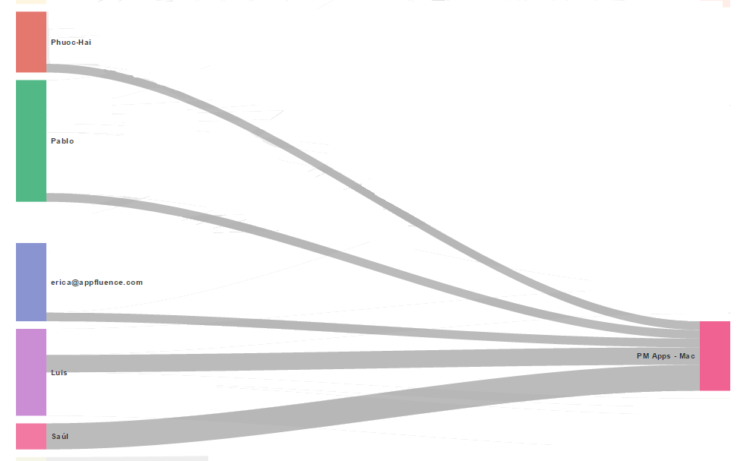Given how lucrative professional consulting is, there’s a rise in the number of graduates opting to work for the Big 4 crowd. Besides boosting resume credentials with the tag of having worked under a globally established name, these companies pay their staff well and offer more opportunities to climb up the professional ladder.
The benefits such firms get from hiring a young workforce is that they’re straight out of college and have textbook knowledge on the latest practices followed by financial bodies. Even better, they are eager to prove themselves and can soak up new information like a sponge.
But as more contracts are awarded, the workload increases and puts a strain on the increasingly multi-generational workforce, with senior experts offering more guidance and supervisory support and junior recruits doing the heavy lifting. In the service industry, the bill-ability of work is a yardstick for the revenue generated. And in the bid to keep this high, consultants are stretched thinly and pick up extra shifts to add value to the hours charged out to the client. Fatigue is bound to happen which lowers both morale and work quality over time.
Here are a few tips to prevent workplace fatigue;
1. Visualize the workload

Workloads are an indicator of the activities running in a certain week, month or across the year. It gets pinned to the project schedule, which displays the number of projects, starts, and end dates, skills assigned and resources taken out of the availability pool.
When it comes to choosing software to track down departmental resources, you should give resource management software a try. One such tool in the current market is Saviom. It lets you create, alter and drop bookings that are pinned to a schedule chart after taking into account the exact strength and composition of your business. Fluctuations due to unplanned leaves or a project with a higher priority than pulls resources working on another activity can then be remedied with resourcing treatments. These can include renegotiating release dates and adding surplus staff who can recognize and resolve bottlenecks with their expertise.
2. Streamline collaboration
Did you assign the same work to two different resources bearing the same name? Or repeat a task that was already completed long since? Challenges like these are common in medium to large organizations with cubicles that separate people into silos. A collaborative platform on boards the entire enterprise and ensures communication can be found in one place.
It is here that everyone can access files, folders and backtrace conversation threads to know what happened last and what should be done next. It reduces the chance of redundancies and misplacing important information. More importantly, it lets individual resources assigned to take end-to-end ownership of the client-facing service being provided.
3. Incentivize results, not hours

Productivity at work has more to do with working smarter rather than pushing yourself harder. Instead of measuring the number of hours worked, what should be checked are the results achieved within the project man-hours. Keeping a watch on the efforts ensures that no single resource is being underutilized, or worse, biting off more than they can chew.
The objective is to ensure everyone is optimally occupied. The first step for this to be a success is to take stock of the work context and resource profile by expertise, location, contractual terms, and work history. In other words, the projects they were previously on and what their line managers had to say about their ability to deliver. This lets you find exact matches for different lines of work. You can even transfer resources from low billable work or administrative routines to a project with heightened bill-ability such that you can still make a handsome profit off the difference between the consultant’s cost rate and project’s charge out rate.
4. Authorize regular breaks
As competent and valuable as your pool is, they’re also human and can’t be chained to their desks all day long. Workers who take frequent breaks are more productive than those who pull all-nighters closer to the project deadline. In fact, overworked employees cost companies $63 billion in lost productivity.
Allowing your staff to take breaks lets them manage their time better. Travis Bradberry from Inc.com explains the Pomodoro technique in detail. It follows a 52/17 balance that sees workers focus on a particular task sans distractions for 52 minutes straight before taking a 17-minute break. In other words, they’re on a break for 30% of the workday! While this figure can cause you to think you’re encouraging laziness more than anything, the reality is that workers who can refuel their brain think better and get work done faster, which is actually the point. Hallway and watercooler conversations help employees catch up with their colleagues, and stay engaged. This keeps them refreshed while preventing them from excessive misuse of the Internet and company time for non-work purposes.
5. Hire contingent workers

The demand for instant services has fueled the need for workers who can rise to the occasion, deliver impact and add financial value to the company’s growth chain. After all, competitors can capitalize on delays coming from your end on account of lacking available and experienced hires. This is where an on-demand hub comes in handy.
Contingent workers refer to part-timers, temp staff, interns, contractors and freelancers who are looking to add diversity to their portfolio collection. The benefit of professional service consulting firms opting to tap into this alternative talent market is that neither payroll nor actual billable hours get overinflated. Rather, it is reallocated around project needs and the worker’s expertise. Besides, such workers can approach and solve issues from a different angle, based on what they’ve picked up on working with other teams on prior projects.
The lesson to be learned here is that regardless of their age and ability to amass transferable skills, treating your employees right makes them happier and more than willing to go the extra mile. It is imperative that workloads balance out and make use of the right people at the right time and cost because undervalued and overworked staff would only stick to your company till a better offer comes along. You will consequently experience high turnover which won’t do your company reputation any favors. Use the tips discussed here wisely to transform the way your service economy works!
 Hi Boox Popular Magazine 2024
Hi Boox Popular Magazine 2024



